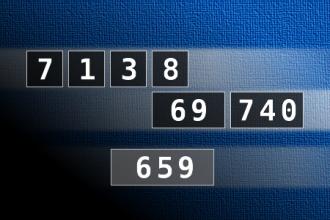Calculate the number 659
NUMBERMANIA: Calculate the number 659 using numbers [7, 1, 3, 8, 69, 740] and basic arithmetic operations (+, -, *, /). Each of the numbers can be used only once.Correct answers: 6
#brainteasers #math #numbermania

Switching channels
An old married couple was at home watching TV.
The husband had the remote and was switching back and forth between a fishing channel and the porn channel.
The wife became more and more annoyed and finally said:
"For god's sake! Leave it on the porn channel. You already know how to fish!"

